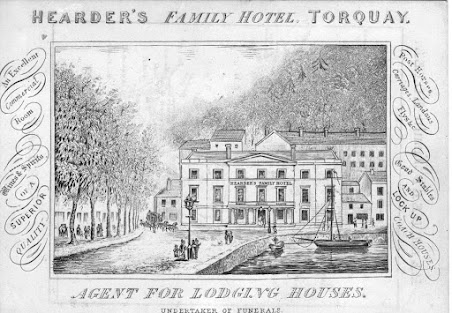Explanation
Definition
Most
guide books can be identified from their title, but other authors writing
primarily a history of their town also used the term. Consequently there are a
few “guides” which have not been included.
Maps which
show the whole of Devon have not been included as they have already been
adequately listed in The Printed Maps of
Devon or The Victorian Maps of Devon;
a list of potential inclusions is given in Appendix 1. Maps which are really
coastal charts have also been excluded. It is hoped that a further volume will
list these.
Order
Heading
Date
Biographical Note
Size
Scale
Inscriptions and
Place-Names
Editions
Sources
Position of Features on Maps
Aa Ba Ca Da Ea
Ab Bb Cb Db Eb
Ad Bd Cd Dd Ed
Ae Be Ce De Ee
Where a large feature extends over more than one square of the grid the
position of the centre is given, except when the feature is in a corner when
the corner reference is given. When the feature is outside the inner border the
reference is followed by ‘OS’. Position information is given where this feature
changes during the lifetime of the map. Some maps, due to their size, are
illustrated only in part.
Publications
After the description of an edition of each map there is a list of the
titles of atlases, books or other publications in which the map appeared. The
title (which may be shortened, omissions being shown by dots) is given in
italics, using the original spelling but in lower case except for initial
letters. This is followed by the place, the publisher and the year of
publication. If the year is shown without brackets, e.g. 1839, the date given
on the title page. If more than one date is shown, separated by commas, these
are the dates of successive editions of the same publication. If the date is
shown in the form 1882 (1892), this means that although 1882 is the date on the
title page, there is other evidence to indicate a later (or earlier)
publication. Dates in brackets alone, e.g. (1845), indicate date is
conjectured.
Catalogue References
B Bodleian
Library, Oxford.
Berlin Staatsbibliothek
zu Berlin, Preußischer Kulturbesitz.
Bid Bideford Public Library.
BCL Birmingham Central Library.
BL British Library (and British
Museum), London.
BRL Bristol Central Library.
C Cambridge University
Library.
CB Collection of Clive Burden.
DoC Collection of the Duchy of
Cornwall, London.
DevA Devon Heritage Centre in Exeter or Devon Archives and Local Studies Centre (previously Exeter Westcountry Studies
Library).
Edin Edinburgh Public Library.
Exm Exmouth Public Library.
FB Previously in the collection of the late Francis
Bennett.
GL Guildhall Library, London.
GUL Glasgow University Library.
Ilfr Ilfracombe Library.
KB Collection of Kit Batten.
King Kingsbridge Public Library.
Leics Leicester Central Library.
MCL Manchester Central Library.
McM McMaster University Library,
Hamilton, Ontario.
MW Collection of Malcolm Woodward.
NA Newton Abbot Public Library.
NDL North Devon Library and Record
Office, Barnstaple.
NLS National Library of Scotland,
Edinburgh.
NLW National Library of Wales,
Cardiff.
Oke Okehampton Library.
OrE Oregon University Library.
P Private collection.
Pl Plymouth Central Library (also WDRO).
PRO Public Record Office, Kew,
London.
RGS Royal Geographical Society.
Sid Sidmouth Public Library.
Tav Tavistock Public Library.
Tot Totnes Public Library.
TQ Torquay Public Library.
TB Collection of the late Tony Burgess.
TM Torquay Natural History
Society (Torquay Museum).
V&A National Art Library, Victoria
& Albert Museum.
W Whitaker Collection,
University of Leeds.
WDRO West Devon Record
Office, Plymouth (includes Plymouth Central Library).




Comments
Post a Comment